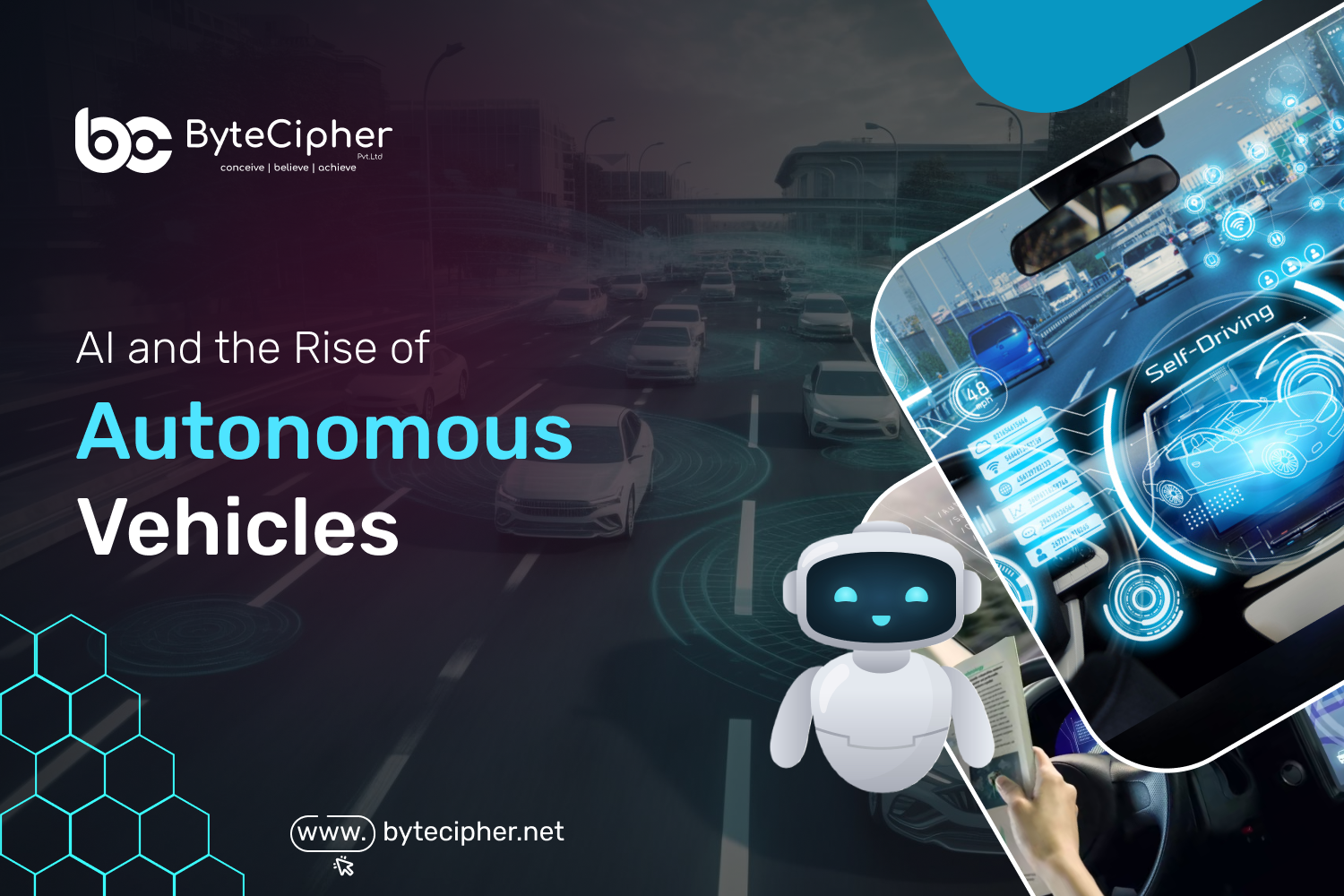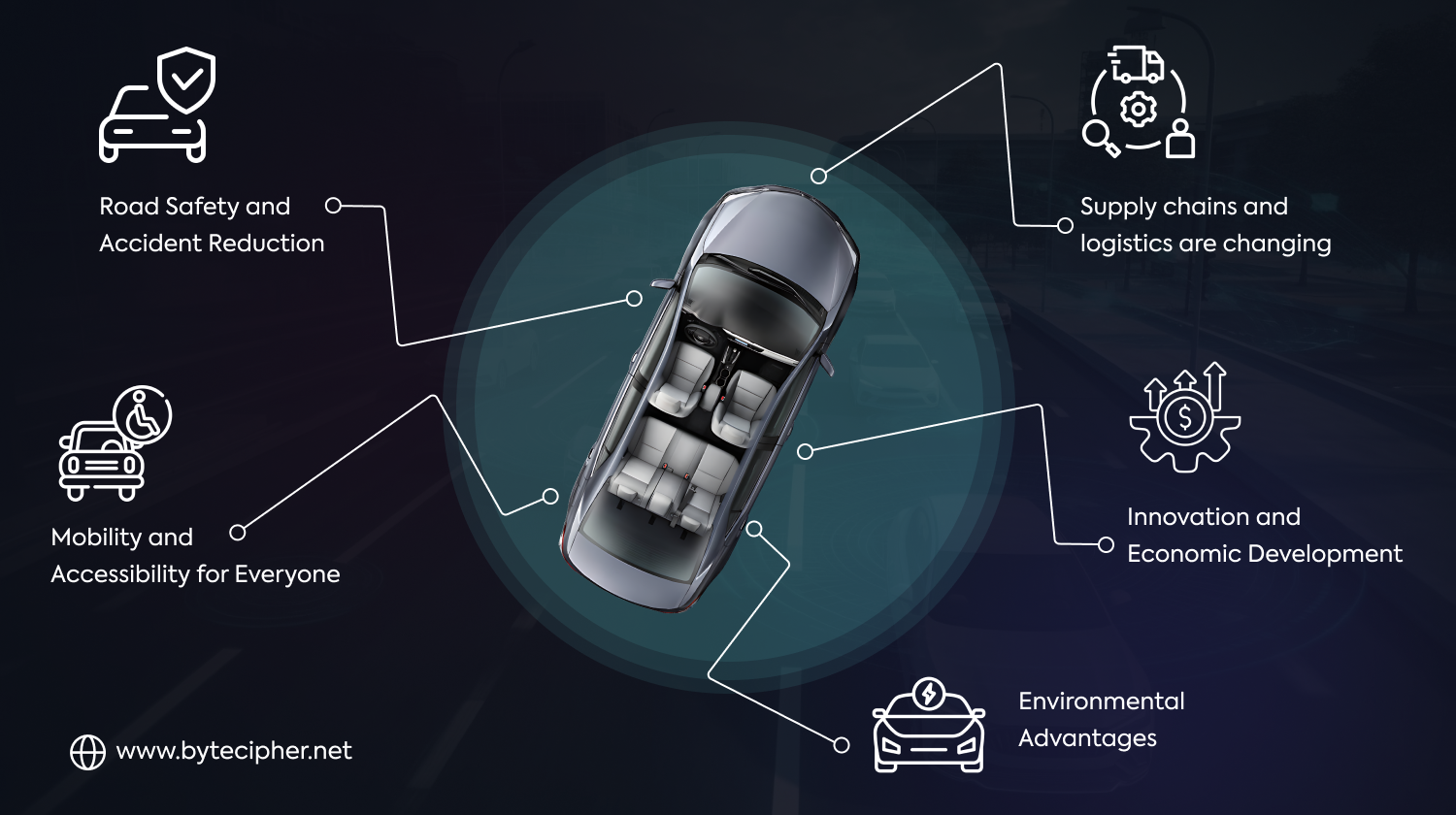
One of the most revolutionary uses of artificial intelligence (AI), which has become one of the most potent technologies of the twenty-first century, is the creation of driverless cars. Previously only found in science fiction, self-driving cars, lorries, and buses are currently being tested on actual roads all over the world. In addition to traditional automakers, companies like Tesla, Waymo, and Uber are spending billions developing cars that can drive themselves safely, effectively, and intelligently.
What, though, is enabling this? AI holds the solution. Modern algorithms, computer vision, and machine learning models are transforming automobiles into intelligent systems that can sense their environment, make judgments, and keep getting better. AI-powered autonomous vehicles have the potential to completely change not just the automotive sector but also logistics, urban planning, and our entire perspective on mobility.
We will explore in detail how AI drives autonomous cars in this blog, as well as the potential they present, the problems they still face, and what the transportation industry may look like in the future.
How Autonomous Vehicles Are Powered by AI
Artificial Intelligence serves as the “brain” of autonomous cars. Self-driving cars view and react to their surroundings using a network of sensors and sophisticated algorithms, in contrast to conventional automobiles that rely on human drivers for every decision.
- Senses and Perception: Ultrasonic sensors, LiDAR, radar, and cameras are all installed in autonomous cars. By analyzing this data, AI generates a 360° image of the road in real time, identifying traffic signals, cyclists, pedestrians, and other cars.
- Making Choices and Making Forecasts: The AI system uses machine learning models to forecast the behavior of objects in its environment, such as whether a pedestrian is going to cross the street or whether a motorist is likely to change lanes.
- Navigation and Path Planning: High-definition maps, GPS, and real-time data are combined by AI to find the safest and most effective route. It constantly adapts to traffic, collisions, and shifting road conditions.
- Constant Education: Every mile traveled aids in the AI system’s learning and development, whether in simulations or real-world testing. Vehicles get increasingly intelligent, dependable, and capable of handling complicated or uncommon situations as time goes on.
The Potential of Self-Driving Cars
Beyond personal convenience, there are a ton of potential presented by the development of AI-powered autonomous vehicles.
1. Road Safety and Accident Reduction
Worldwide, more than 90% of traffic accidents are the result of human mistake. Autonomous cars have the potential to significantly lower traffic fatalities and injuries because of their capacity to sense their environment and respond quickly.
2. Supply chains and logistics are changing.
Due to their ability to work around the clock, self-driving trucks and delivery vehicles can shorten delivery times and save money on transportation. Last-mile deliveries, freight, and e-commerce are all going to change as a result of this efficiency.
3. Mobility and Accessibility for Everyone
People who are unable to drive, aged, or disabled can now be more independent thanks to autonomous vehicles. This inclusiveness has the potential to change how societies grant people access to movement.
4. Environmental Advantages
AI lowers pollutants and fuel consumption through improved traffic management, optimum routes, and smoother driving. The integration of autonomous systems with electric vehicles has the potential to significantly contribute to the fight against climate change.
5. Innovation and Economic Development
New opportunities in AI development, auto manufacturing, insurance, smart city infrastructure, and ride-hailing services are being brought about by the growth of autonomous vehicles. Around this technological revolution, entire industries will develop.

Risks and Difficulties
The path to complete autonomy is difficult and full with obstacles, despite the thrilling promise.
Security in Complicated Settings
Unpredictable events like pedestrians who are jaywalking, abrupt weather changes, or poorly designated roads must be handled by AI. Reliability is still being worked on to reach 100%.
Issues with Cybersecurity
In essence, autonomous cars are computers on wheels. Because of this, they are susceptible to hacking, which raises grave issues over passenger safety and personal data privacy.
Moral Conundrums
If an autonomous car had to choose between veering into another car or hitting a pedestrian in a situation where there was no winner, what should it do? These “moral machine” conundrums draw attention to the difficult ethical issues surrounding AI decision-making.
Law and Regulation Obstacles
Autonomous car laws differ greatly between nations and even within regions. Liability issues, including who is at fault in an accident involving a self-driving car, remain unanswered.
Effects on Employment
Significant employment displacement may occur in sectors including delivery, cab services, and haulage. Societies will require economic flexibility and worker reskilling programs.
Business and Social Impact
Beyond simply altering our driving habits, the emergence of AI-powered cars will transform our cities, economies, and way of life.
-
Urban Planning: Cities can rethink infrastructure to give priority to bikes, pedestrians, and green spaces when there are fewer accidents and improved traffic flow.
-
Legal and Insurance Frameworks: Rather than focusing on individual drivers, traditional insurance models will start to cover AI makers and systems.
-
New Business Models: AI-powered logistics, ride-hailing applications, and subscription-based autonomous fleets will all lead to the emergence of completely new sectors.
-
Changes in Lifestyle: As AI drives, passengers will be able to work, unwind, or amuse themselves during their daily travels.
The Path Ahead
The development of completely autonomous vehicles is a “when,” not a “if.” Semi-autonomous functions, such as adaptive cruise control, automated parking, and lane-keeping assistance, will continue to be standard in new cars in the near future. Self-driving trucks, AI-powered delivery fleets, and driverless taxis will all proliferate in regulated settings over the course of the next ten years.
The long-term goal is for autonomous cars to rule the road in the future, lowering pollution, preventing accidents, and improving accessibility to transit. To achieve this vision, though, governments, tech firms, manufacturers, and the general public must work together to responsibly solve the issues.
FAQs
Q1. What part does AI play in self-driving cars?
Artificial intelligence (AI) analyzes sensor and map data to sense the environment, forecast behavior, and make real-time safe driving decisions.
Q2. Do self-driving cars pose no risks?
They could be safer than human drivers, but there are still issues with erratic weather and sporadic occurrences.
Q3. When will completely driverless cars be available?
There are already aspects that are semi-autonomous. Within the next five to ten years, fully autonomous vehicles might be ubiquitous in controlled areas and logistics, however broad acceptance might take longer.
Q4. Will drivers be replaced by self-driving cars?
For many years to come, AI is predicted to supplement human driving rather than completely replace it, albeit some jobs in logistics and transportation may be lost.
Q5. Which sectors will gain the most from driverless cars?
Industries that stand to gain the most include insurance, ride-hailing, logistics, e-commerce, auto manufacturing, and smart city infrastructure.
In conclusion
AI is at the heart of the revolution in driverless vehicles. Vehicles are becoming sophisticated devices that can navigate the world without human input thanks to artificial intelligence (AI), which makes it possible for real-time decision-making, perception, and continuous learning.
There are too many advantages to pass up, including safer roads, more effective logistics, greener cities, and equitable mobility. To fully mainstream autonomous vehicles, however, safety, regulatory, and public trust issues must be resolved.
AI is taking the lead in the current reimagining of the transportation industry, and the trip ahead looks to be revolutionary.


